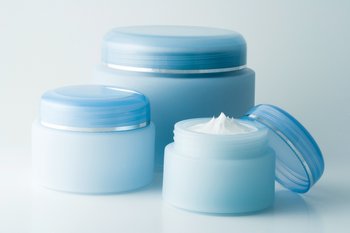Most steroid skin creams likely safe during pregnancy
Expectant mothers can use corticosteroid creams for irritated skin without putting their fetus at risk, except for large amounts of very strong creams, a new study suggests.
In general, using those ointments during pregnancy was not linked to babies’ chances of having cleft palate, being born early or small or any other measured negative outcome, researchers found.
That’s not surprising and is in line with previous research, lead author Dr. Ching-Chi Chi of the dermatology department of Chang Gung Memorial Hospital in Chiayi, Taiwan, said.
“This is not new information, however this article is reassuring to women who are using some topical corticosteroids,” Dr. Heather Lipkind, an associate professor of obstetrics, gynecology and reproductive sciences at Yale School of Medicine in New Haven who was not involved in the new study, told Reuters Health.
The researchers did find that when women used more than 300 grams of very potent corticosteroids during pregnancy, babies were at increased risk of low birth weight, which is new, Chi said.
Topical steroid creams are commonly prescribed for rashes, eczema or other skin inflammation. Generic nonprescription forms such as Bactine are very low strength, but prescription forms can be low to high strength.
Using UK data from 1989 to 2006, the researchers compared rates of birth defects and delivery complications among babies born to about 2,700 women who were prescribed a corticosteroid cream during pregnancy and those born to 7,200 women who didn’t use the drugs.
 Overall, 4.7 percent of babies whose mothers had used corticosteroids were low birth weight, compared to 4.8 percent of those whose mothers didn’t use the creams. Just under 1 percent of both groups of babies were born premature, or before 37 weeks’ gestation.
Overall, 4.7 percent of babies whose mothers had used corticosteroids were low birth weight, compared to 4.8 percent of those whose mothers didn’t use the creams. Just under 1 percent of both groups of babies were born premature, or before 37 weeks’ gestation.
With potent creams, babies’ risks also did not change when women used a total of 100 to 200 grams of the drugs during their entire pregnancy. But when mothers-to-be used 300 grams - the amount in six standard-size tubes - or more, the risk of low birth weight went up sevenfold.
The most potent topical creams include clobetasol propionate, betamethasone dipropionate and fluocinonide (marketed as Vanos and Lidex) and are used to treat severe inflammation, itching or psoriasis.
Steroids dysregulate placental hormones and probably prevent important proteins from getting to the baby, Chi told Reuters Health.
In his team’s study, women who used the ointments were also more likely to have asthma and to take other high-risk medications during pregnancy than those who did not.
Skin irritation, discoloration and thickening are common during pregnancy, and corticosteroid creams are prescribed to about six percent of pregnant women, the researchers wrote in JAMA Dermatology.
Current guidelines recommend mild- or moderate-strength creams for pregnant women unless potent creams are absolutely necessary, which this study supports, Chi said.
If potent drugs are needed, doctors should monitor the growth of the fetus, he added.
“We would not recommend pregnant women stop using topical steroids just because of exaggerated fear of the potential side effects,” Chi said. “We encourage women to apply topical steroids appropriately under physicians’ guidance, which would treat skin conditions effectively and improve pregnant women’s life quality.”
SOURCE: JAMA Dermatology, online September 4, 2013.
###
Pregnancy Outcomes After Maternal Exposure to Topical CorticosteroidsA UK Population-Based Cohort Study
Conclusions and Relevance This study reassuringly showed no associations of maternal topical corticosteroid exposure with orofacial cleft, preterm delivery, fetal death, low Apgar score, and mode of delivery. With this study and all available evidence taken together, the risk of low birth weight seems to correlate with the quantity of topical corticosteroid exposure.
Topical corticosteroids are the most frequently used drugs for treating skin conditions and are prescribed to more than 6% of pregnant women,1(p130) but their safety in pregnancy is not fully understood. Topical corticosteroids are teratogenic and result in fetal growth restriction in animals. However, pharmacology references do not offer explicit instructions on prescribing topical corticosteroids in pregnancy. The prescribing information of topical corticosteroids states that they should be used during pregnancy only if the potential benefit justifies the potential risk to the fetus. The US Food and Drug Administration (FDA) labels topical corticosteroids as pregnancy risk category C, meaning that animal studies have shown adverse fetal effects, but there are no adequate and well-controlled studies in pregnant women.
The current available evidence on the safety of topical corticosteroid use in human pregnancy is limited. Many of the previous studies only investigated the relation between topical corticosteroid use in early pregnancy and orofacial cleft. The results were inconsistent: 1 small case-control study showed a link between maternal first-trimester use of topical corticosteroids and orofacial cleft, but other studies found no such association. A recent Cochrane review has highlighted potential problems with low birth weight (LBW). A hospital-based cohort study showed significant associations of use of very potent topical corticosteroids with lower plasma cortisol levels, decreased placental weight, and LBW infants. Our previous population-based cohort study also found a significant association between maternal exposure to potent or very potent topical corticosteroids and fetal growth restriction. However, no similar associations were found in an earlier study. Therefore, the available data on the effects of topical corticosteroid use on pregnancy outcomes are inconclusive. The objective of this study was to investigate whether maternal exposure to topical corticosteroids has adverse effects on pregnancy by examining a comprehensive set of outcomes.
##
Ching-Chi Chi, MD, MMS, DPhil, FAAD; Shu-Hui Wang, MD, MS; Richard Mayon-White, MBBS, FRCP, FFPH; Fenella Wojnarowska, MA, DM, FRCP